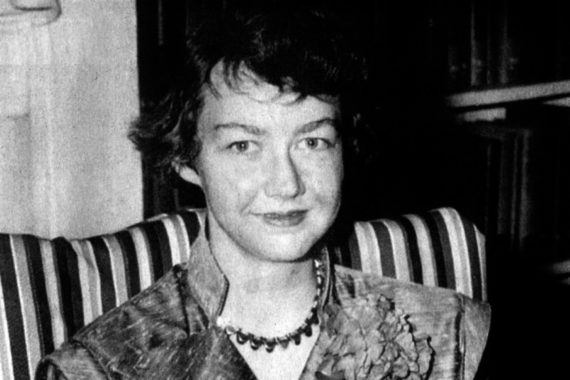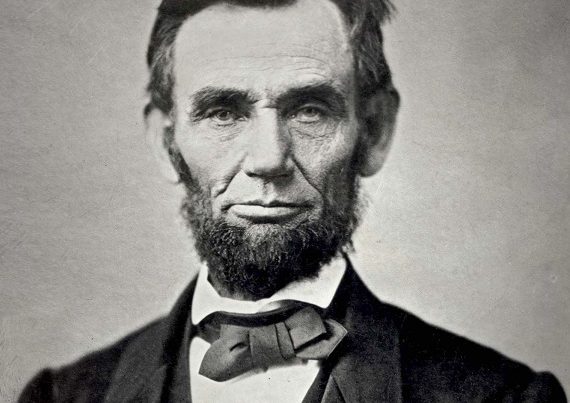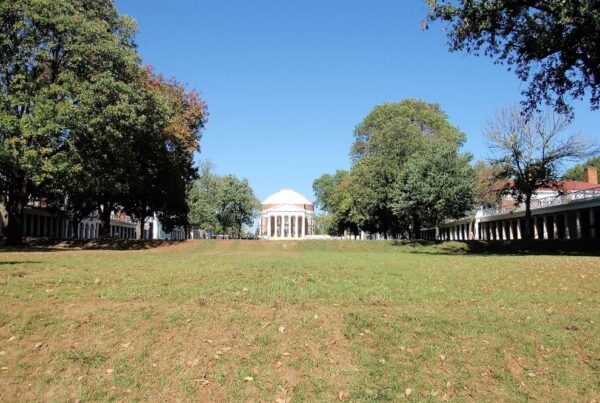YANKEE, n. In Europe, an American. In the Northern States of our Union, a New Englander. In Southern States the word is unknown. (seeDAMYANK.) Ambrose Bierce, THE DEVIL’S DICTIONARY (1906).
Bierce’s definition of the Yankee is a bit outdated. No doubt some Southerners still refer to Northerners, especially New Yorkers and New Englanders, as Damyanks, but no one can say that Yankees live exclusively in New England, in the North, or north of the Mason-Dixon line. Nowadays Yankees live all over the South. Since birds of a feather tend to flock together, Yankees have descended in force on the same Southern cities (Charlotte, Dallas, and Atlanta, for examples), and Yankee resort communities of the trailer court, condominium, and suburban varieties have sprung up in Florida, the Southwest, and all over the Southern Highlands. Most small towns in the South, even many rural communities, have one or two Northern transplants.
Yankees have come to the South—to the Bible Belt and the Sun Belt-for jobs, for safety, for retirement; they have come to escape Jack Frost, the rude and frigid culture of their cities, Damyanks, and a host of economic, racial, and social difficulties. This Exodus— one wonders if the transplant thinks he has come to the Promised Land—has taken much of the geographical distinction out of the word Yankee. But the word designates more than a person from a particular region: it designates the attitudes and values, the frame of mind and outlook on life characteristic of the reformers, innovators, and abstract thinkers of nineteenth-century New England.
If the epithet Damyank is going to be used today, it should be reserved for spiritual descendants of New England’s meddlesome reformers-Yankees of spirit, someone has called them. Certainly Donald Davidson, who spent many pleasant summers in Vermont, did not have a Damyank in mind when he penned that admirable portrait, of Vermont yeomanry, “Cousin Roderic,” in “Still Rebels, Still Yankees.” Davidson distinguished between various kinds of Yankees, and so did Flannery O’Connor. She was friends with a number of Northerners and New Englanders: the ones she didn’t like were Damyanks. Yankees of spirit, the spiritual offspring of Ralph Waldo Emerson.
As far as I know, O’Connor did not use the word Yankee as a devil term, but she did have a few disparaging things to say about Transcendentalism, Emerson (the chief American Transcendentalist), Northern readers, New York City, and New York City critics. In her essays (Mystery and Manners, edited by Sally and Robert Fitzgerald) and letters (The Habit of Being, edited by Sally Fitzgerald), O’Connor set her face against the modern or the popular spirit, occasionally noting with approval the South’s traditional opposition to modernity and the mainstream culture. To a large extent the very aspects of modernity which O’Connor found pernicious and deficient are major features of the Yankee-of-spirit mind: a belief in the Progress of Society and the Perfectibility of Man; a penchant for innovations, theories, and abstractions; and a narrow, provincial, insular vision.
O’Connor was keenly aware of manifestations of Yankee Provincialism, and she did not always have to look northward to find them, whether the imported or the home-grown variety. In her “Georgia Scenes” she depicted Southerners afflicted with both perennial and modern religious and intellectual disorders. She did not have to go to California, New York City or any other place to find freaks and sinners. She knew that modern vices, not to mention ancient ones, easily took root in Southern hearts and minds.
O’Connor traced most Yankee corruptions of faith and intellect back to the Enlightenment, that heady phenomenon which encouraged men to substitute for a religion based on revelation and tradition one based on man’s reasoning and his ability to master nature. She observed in “Some Aspects of the Grotesque in Southern Fiction.”
Since the eighteenth century, the popular spirit of each succeeding age has tended more and more to the view that the ills and mysteries of life will eventually fall before the scientific advances of man, a belief that is still going strong even though this is the first generation to face total extinction because of these advances.
O’Connor was not willing to measure the health of the country by a material yardstick. She said that the writer interested in spiritual concerns would likely “take the darkest view of all of what he sees in this country today. For him, the fact that we are the most powerful and wealthiest nation in the world doesn’t mean a thing in a positive sense.”
In “The Fiction Writer and His Country,” O’Connor responded to those readers, critics, and editorial writers who sought “uplift” from their reading, who complained about the grotesqueness of Southern fiction, and who demanded from fiction writers a joyful vision of American life. Critical of materialistic yardsticks and progressive assumptions, she saw “some ugly correlation between our unparalleled prosperity and the stridency of these demands for a literature that shows us the joy of life.” She asks whether “these screams for joy would be quite so piercing if joy were really more abundant in our prosperity.” In “The Teaching of Literature,” O’Connor explained why freaks made modern readers uncomfortable: “It is only in these centuries when we are afflicted with the doctrine of the perfectibility of human nature by its own efforts that the vision of the freak in fiction is so disturbing. The freak in modern fiction is usually disturbing to us because he keeps us from forgetting that we share in his state.”
Southerners see and assimilate the freak more readily than the typical Yankee does. “To be able to recognize a freak,” noted O’Connor in “The Grotesque in Southern Fiction,” “you have to have some conception of the whole man, and in the South the general conception of man is still, in the main, theological.” If we readily recognize the freak, who might be a prophet, a nihilist, or a humanist, we will sense him “as a figure for our essential displacement.”
O’Connor, who once described a collection of her short fiction as “nine stories about original sin,” reminds us that we are all children of Adam, not of that ideal man imagined by Voltaire and the Encyclopedists. Because the Enlightenment has had a slow dawning in the South, the Southerner still claims his patrimony. In a letter to Cecil Dawkins, O’Connor juxtaposed the Southern vision of man in society with that of the enlightened or modern Liberal:
The notion of the perfectibility of man came about at the time of the Enlightenment in the 18th century. This is what the South has traditionally opposed…The South…still believes that man has fallen and that he is perfectible by God’s grace, not by his own unaided efforts. The Liberal approach is that man has never fallen, never incurred guilt, and is ultimately perfectible by his own efforts. Therefore, evil in this light is a problem of better housing, sanitation, health, etc. and all the mysteries will eventually be cleared up. Judgment is out of place because man is not responsible. Of course there are degrees of adherence to this, all sorts of mixtures, but it is the direction the modern heads toward.
Hawthorne, one of O’Connor’s favorite authors, a man with whom she had much affinity, wrote ‘ ‘The Birthmark,” an anti-modernist story about the misguided and unsuccessful attempts of the scientist/magician Alymer to create a perfect humanity. Referring to this story, O’Connor lamented that “the Alymers whom Hawthorne saw as a menace have multiplied. Busy cutting down human imperfection, they are making headway on the raw material of good.” These Alymers (O’Connor cast this creature as Rayber in The Violent Bear It Away and as Sheppard in “The Lame Shall Enter First”) make all of the wrong assumptions about means and ends, and their vision is decidedly narrowed by false philosophies.
O’Connor had a good deal of contact with literary and scholarly persons, sometimes too much, she seems to suggest in her letters. She wrote to a friend that most of the members of a certain literary gathering lived “in a world God never made.” They loved obfuscation and obscurantism and looked at the reading and writing of literature through the foggy spectacles of literary abstractions. O’Connor’s imagination suggested a fitting punishment for two overly abstract and psychological (after the manner of Freud) participants at a writer’s workshop: “I can see [them] chained together by mutual hate on one of the less important circles of the inferno, eternally arguing if church steeples are phallic symbols.” “As to Sigmund,” she said in a letter to another friend, “I am against him tooth and toenail but I am crafty….Within his limitations I am ready to admit certain uses for him.” She admonished a friend inured to Freudian literary criticism: “My Lord, Billy, recover your simplicity. You ain’t in Manhattan.” Perhaps it is significant of O’Connor’s assessment of the importance of Freudianism that she places Freudians in one of the less important circles of hell.
One of her sternest letters was to a professor of English who, under the influence of a fantastic theory, completely misinterpreted “A Good Man is Hard to Find.” O’Connor wrote to him: “If teachers are in the habit of approaching a story as if it were a research problem for which any answer is believable as long as it is not obvious, then I think students will never learn to enjoy fiction. Too much interpretation is certainly worse than too little, and where feeling for a story is absent, theory will not supply it.” Not wishing to leave too harsh an impression on the theory-befuddled professor, O’Connor closed her letter with this explanation: “My tone is not meant to be obnoxious. I am in a state of shock.”
From reading literary criticism of her own work and from answering questions about her stories, O’Connor knew that Occam’s razor had been neglected by many of her interpreters. Obsessed with fantastic theories, fond of complexity and abstractions, communing only with other intellectual provincials, many academics were poor readers of her work. Their farfetched, complex Freudian and sociological interpretations were only in the vaguest of ways related to her stories. Some looked for and found meanings that weren’t there, as the following dialogue illustrates:
“Miss O’Connor,” inquired a symbol-searching Vanderbilt student, “why was the Misfit’s hat black?”
“Well,” O’Connor answered, “he stole it from a countryman and in Georgia they usually wear black hats.”
A few minutes later the same student asked, “Miss O’Connor, what is the significance of the Misfit’s hat?”
Seldom at a loss for words, O’Connor replied, “To cover his head.”
There were other types of readers constitutionally unable to appreciate her fiction: Northern readers and New York City critics. O’Connor wrote in “The Grotesaue in Southern Fiction”: “I have found that anything that comes out of the South is going to be called grotesque by the Northern reader, unless it is grotesque, in which case it is going to be called realistic.” Of New York City critics she said (in “The Regional Writer”), “For no matter how favorable all the critics in New York City may be, they are an unreliable lot, as incapable now as on the day they were born of interpreting Southern literature to the world.” Yankee Provincialism, that Enlightenment inspired, tradition-abolishing, abstraction-loving limitation of vision, kept some readers and critics from liking O’Connor’s work. Indeed, she said in one of her letters to Maryat Lee, “I would have been a little uneasy had Time liked” The Violent Bear It Away.
The folly of applying imaginary abstractions and novel theories to religion was also apparent to O’Connor. She told Sally and Robert Fitzgerald that a Symposium on Religion and Art at Sweet Briar College (at which she was a participating lecturer) had given her “a stomach full of liberal religion.” What was so bad about the Symposium? O’Connor didn’t know what one of the lecturers “meant to say but he left the impression that religion was good because it was art and magic. Nothing behind it but it’s good for you.” Revealing some of the wit her letters are famous for, she continued: “Then they had the Dean of Theological School at Drew. He was a Methodist-Universalist. I gather this means you don’t drink but about theology you are as vague as possible and talk about how the symbology has played out in Christianity and how it’s up to artists to make up a new symbology.” At gatherings such as this, she wryly observed, “You are considered great in direct proportion to how often you can repeat the word symbology.” Never wishy-washy in her discussions of religion, O’Connor told the Sweet Briar audience “that when Emerson decided in 1832 that he could no longer celebrate the Lord’s Supper unless the bread and wine were removed…, an important step in the vaporization of religion in America had taken place.”
“The Theories are worse than the Furies,” O’Connor told one of her friends. Perhaps she refers to the diseased intellectual preoccupations of academia.
A Southerner and a Catholic, Flannery O’Connor viewed the world “from the standpoint of Christian orthodoxy.” She insisted that this standpoint enlarged her vision, enabled her and others of like faith to see beneath the surface of things, to see things in the light of eternity. The Southerner, if he has not traded his older eyes for those sold in Yankeeland and the universities, enjoys the same expanding and penetrating vision. He recognizes the freak and senses in the freak his own fallen, disordered self. His sight is not obscured by theory, abstraction, and new symbology; it is enriched by stories, a peculiar history, and the Bible. “What has given the South her identity,” O’Connor observed in “The Catholic Novelist in the Protestant South,” “are those beliefs and qualities which she has absorbed from the Scriptures and from her own history of defeat and violation: a distrust of the abstract, a sense of human dependence on the grace of God, and a knowledge that evil is not simply a problem to be solved, but a mystery to be endured.”
Like the Nashville Agrarians, O’Connor did not want to see the South capitulate to modernity or slide into the cultural currents of the mainstream. Her anguish, as theirs, was “caused not by the fact that the South is alienated from the rest of the country, but by the fact that it is not alienated enough, that every day we are getting more and more like the rest of the country, that we are being forced out not only of our many sins, but of our few virtues.” She said it was difficult to “reconcile the South’s instinct to preserve her identity with her equal instinct to fall eager victim to every poisonous breath from Hollywood or Madison Avenue.” O’Connor left no doubt as to which instinct she thought Southerners should follow and cultivate.
She was a prophet, notes Marion Montgomery, re-calling “us to know but forgotten truths, to the necessity of our casting backward in our thought to some point where thought went astray.” In O’Connor’s analysis, that point is the Enlightenment, which established the epistemological foundations (shifty though they be) of modern and Yankee Provincialism. Corruptions and restrictions of vision, knowledge, and understanding, once primarily a Northern affliction, now darken the light all over the land. The assumptions, doctrines, and methods of the Yankee Provincial are taught in our schools, universities, and seminaries and are illustrated in radio, television, and the daily and periodical press. No matter where O’Connor encountered this modern devil, whether in Hollywood, New York City, Sweet Briar College, or Atlanta, she was quick to name him so that he might be exorcised. A thoughtful reading of her essays and letters, not to mention her fiction, will do much to remove the blinders of Yankee Provincialism from our eyes.
This article was originally published in the 1985 Spring Issue of Southern Partisan magazine.








One of my favorite authors. Flannery O’Connor wrote with great imagination and thought-provoking imagery. “Good Country People” is one of my favorite stories of her’s.